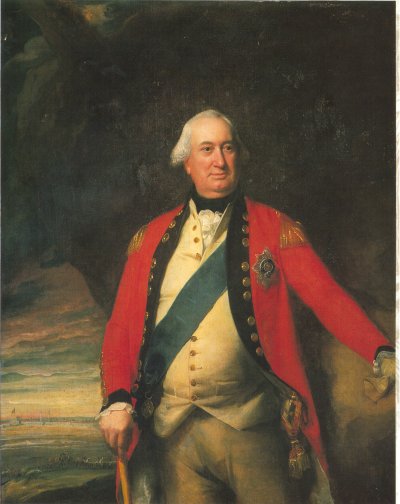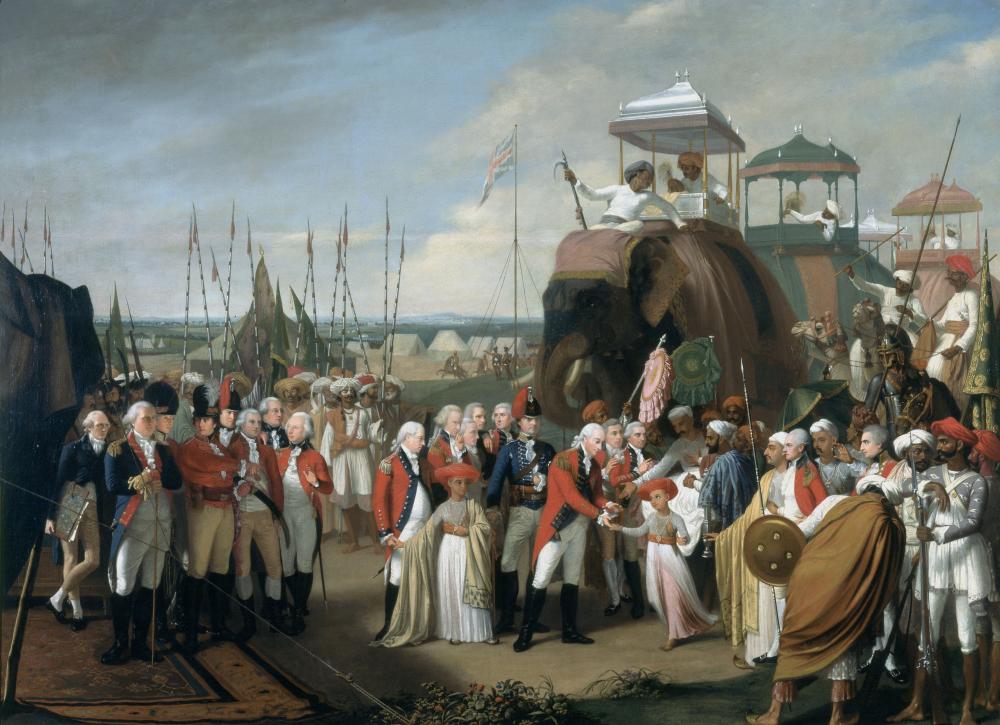After gaining the rights of Bengal, East India Company modified the land revenue system in such a manner that it could be more beneficial more for East India Company. In this section, we will discuss those land revenue model which was introduced by East India Company.
Permanent Settlement
Permanent settlement introduced by Governor-General Lord Cornwallis in 1793 in Bengal, Bihar & Orissa. The settlement represented the culmination of series of the experiment carried out by the company in the field of land revenue. The company got the right to collect revolt in Bengal, Bihar & Orissa (treaty of Allahabad) in 1765.

By this time, the medieval land revenue settlement had degenerated. There was no proper record of agricultural production & record of revolt being collected by peasants because of this, the company had to take steps to develop new land revenue settlement. English Company was a trading body. Its rule was colonial, the company’s officials were motivated by the desire to collect the maximum possible amount of revenue so that company could accumulate maximum wealth & could make maximum profit. This colonial outlook also persuaded the English Company to introduce a new Land Revenue settlement.
In 1765, the dual government was established in Bengal. It remained in force till 1772. During this period, the company appointed an Indian official as Nayab Deewan for Bengal & Bihar Md. Reza Khan was appointed as Nayab Deewan for Bengal Raja Deeraj Narayan appointed as Nayab Deewan for Deewan. In 1766, he was replaced by Raja Sitab Rai. These Nayab Deewan collected revolt with the help of Zamindar 10% of the total revenue collected was given to Zamindar for their services and 90% was received by the company. This arrangement couldn’t fun properly because of the continuous conflict between Indian Nayab Diwan & the company’s European officials. It was abundant in 1772 by W. Hasting (Government of Bengal, Governor-General in 1773 after).
In 1772, the Quinquennial settlement (5 years settlement) was introduced in Bengal by W. Hastings. In this system, Zamindars were given the right to collect Land Revenue for 5 years. The amount of revolt to be deposited by Zamindars with the English company was decided through auction/highest bidding. This system resulted in the extreme exploitation of peasants & destruction of agriculture in Bengal because Zamindars tried to collect maximum possible revolt from peasant within 5 years as they were not sure of the continuation of their Zamindari rights after 5 years. It abounded in 1777.
At the time of his appointment as Governor-General of Bengal, Lord Cornwallis was instructed by British PM younger pit to find a permanent solution to the problem of Land Revenue in Bengal. The discussion was started by Cornwallis in his executive council & during this discussion, from there two viewpoints emerged. Sir John Shore thought that the Land Revenue settlement should be made with Zamindar by recognition of them as the owner of Land James Grant put forward the opinion that the company should be recognized as the owner of the land. Lord Cornwallis himself was Zamindar in Britain, so he favored John Shore’s idea.

In 1789, Sir John Shore prepared a report known as “Shore Minute” based on this report, Decennial settlement (10 years settlement) in 1790. This settlement was declared permanent in 1793.
Features
In this settlement, Zamindar recognition as owner of the land. Land rights enjoyed by peasant proprietors for ages were taken away. The Zamindari rights were conferred through the auction method. The highest bidder was given the right to collect Land Revenue. 89% of the bid amount was to receive as Land Revenue by the company, 11% was to be retained by Zamindar by way of his remuneration.
Zamindars were supposed to arrange to issue Patta & Qabuliyat. But in reality, there was no arrangement to ensure that Zamindar has issued Patta & Qabuliyat. The Permanent Settlement was introduced in Bengal; Bihar & Orissa in beginning later on its temporary form were extended to the Agra region, Punjab & central provinces. In 1793, Sunset law was enacted. This law provided that if Zamindar faith to deposit the agreed amount of Land Revenue by the Sunset of last day fixed for the purpose, then his Zamindari rights could be taken away. In 1799, Lord Wellesley enacted a new law known as “Haptam”. This law empowered Zamindars to evict/remove peasant without following any judicial legal procedure if they failed to deposit rent on time.
Patta & Qabuliyat– Under the Patta system, the area sowed, types of crops cultivated and revenue share was duly written on paper. The Qabuliyat system involved a deed agreement between the peasant and the government. Qabuliyat system aimed at discouraging the Jagir system
The expectation from Permanent Settlement
At the time of introduced of permanent settlement, it was expected that it will benefit the company as well as peasants. It will result in general prosperity.
Expectation for Company
The company was expected to get a fixed, stable, secure income because Zamindar was to deposit the agreed years. The company was to do nothing as all responsibility was handled by Zamindar himself. It was expected that the company’s officials will get liberated from responsibility associated with the collection of revolt. These officials could be employed in other important responsibilities.
Zamindars were expected to act as pillars for the company because their existence was dependent on the continuation of the British Rule. The company was expected to remain safe from the reaction of the peasantry because the company was to remain behind the scene. The amount of Land Revenue was fixed in perpetuity/forever but the company wanted to mobilize more resources in the future by imposing taxes on trade & commerce.
Expectation of Zamindars
Under this system, the Landlord was expected to benefit very much because the amount of Land Revenue was fixed forever. The Zamindar could increase their income by developing infrastructural facilities. Any increase in production brought about through the investment & efforts of Zamindar was expected to benefit them.
Expectation for Peasants
A permanent settlement was expected to benefit as well because they were supposed to pay only the bid amount as land rent to Zamindar. Peasants were expected to remain safe from the exploitation of the Landlord because the feature of the Landlord & safety of the Landlord was permanently dependent on the peasantry.
Outcomes of Permanent Settlement
A permanent settlement was introduced with high hopes it was expected to benefit every stockholder but since it was the product of the colonial regime it could never be beneficial to common Indians. At the time of inviting bids, Lord Cornwallis increased urban elements to participate in the auction process so that the existing agrarian was replaced by a new structure loyal to the company. These urban elements were given the belief that Zamindari rights were of great economic value and would help them in becoming richer.
These urban elements didn’t have any idea of actual production they put forward impractically high bids to outsmart traditional Landlord. At times the bid amount was even more than the total production & because this fundamental settlement produces a disastrous result. Most of the Landlord failed to pay the agreed amount of revenue on time. None of the expectations associated with permanent settlement could be fulfilled.
The company failed to get any fixed, stable, secure income. The company’s official remained busy in outing the Landlord who failed to pay revolt on time & making fresh arrangements for such land. Instead of becoming a pillar for the company, the dis-budget list Landlord became its strongest enemy. Many of the Landlord raised the banner of revolt against British Rule.
Most of the new Zamindar had no interest in Land. These urban elements continued to stay in cities. They tried to collect land revenue through an agent or sold their Zamindari rights to other parties because of this absentee Landlordism & sub infatuation became an essential feature of permanent settlement. The class of urban Landlord had persuaded Zamindari’s rights to make a quick profit; they didn’t invest anything in the development of agriculture. They tried to collect as much as possible from the peasantry as a result of which peasants suffered immensely & agriculture got ruined.
The situation improved to some extent after 1819, because of this time most non-serious Zamindar had been ousted & serious Zamindar had taken the step to increase agriculture production by development infrastructure by extending cultivation because of that some peace & tranquility development in permanent settlement areas after 1819. The wisdom behind permanent settlement could become visible only after 1819 became gradually the Landlord had become a supporter of British Rule. Their support was crucial in suppressing the revolt of 1857.

